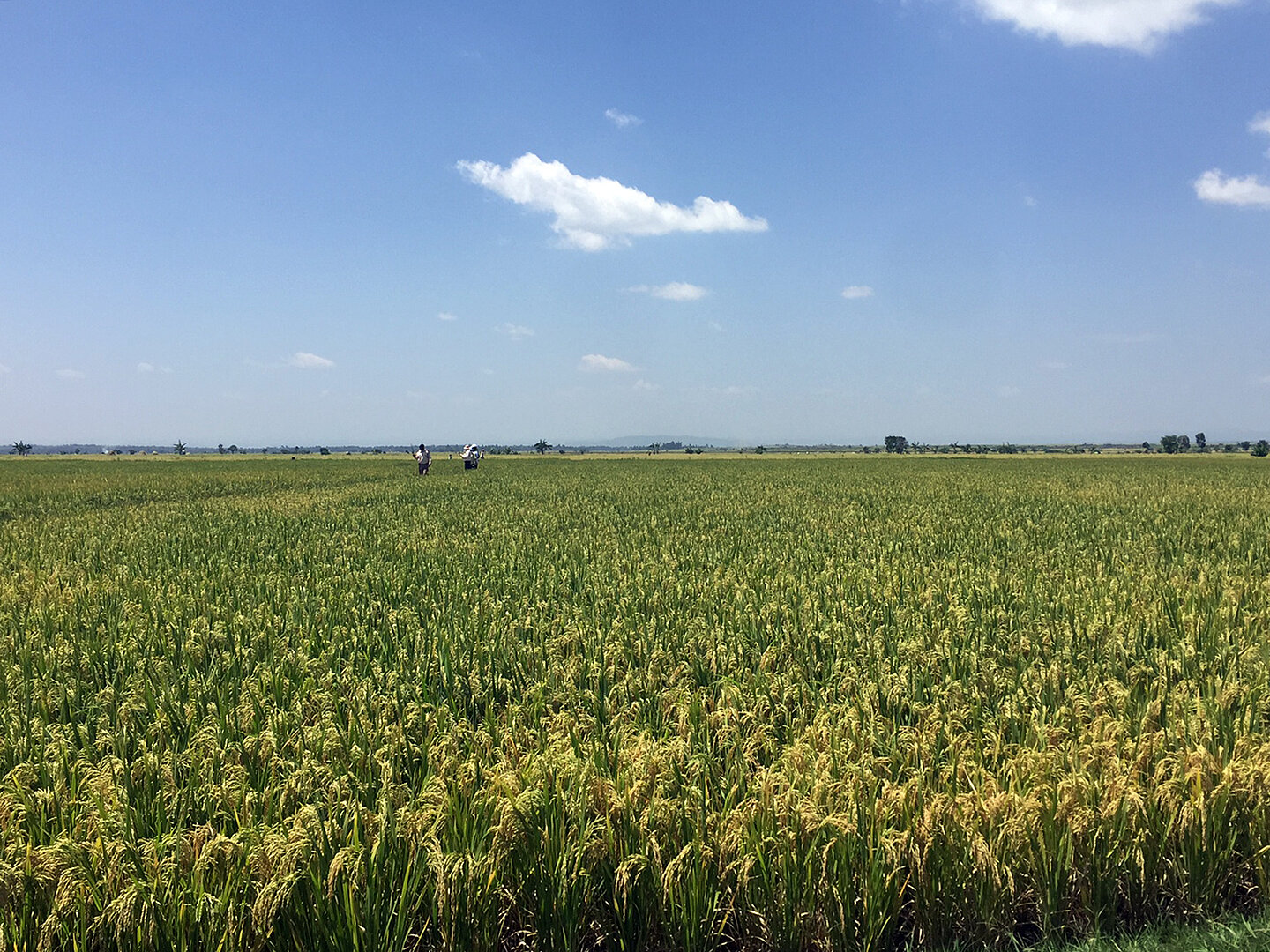
Genome-Edited Rice Shows Resistance to Bacterial Blight in East Africa
February 26, 2025| |
Using genome editing, the "Healthy Crops" consortium, in collaboration with the Kenya Agricultural and Livestock Research Organization (KALRO) developed an innovative strategy to combat bacterial blight (BB) in rice. If approved for use by farmers in Kenya, the BB-resistant rice varieties are expected to increase productivity and reduce yield losses associated with the disease in the affected rice-growing regions.
In 2019, members of the Healthy Crops team identified an outbreak of BB in Tanzania caused by invasive Asian variants of the bacterium Xanthomonas oryzae pv. oryzae (Xoo) which spread rapidly, causing an estimated yield loss of 13–20%.
The starting point for the Healthy Crops researchers is the bacteria's nutrient supply. The Xoo bacteria have a set of “keys” that can open the “pantry” of the plants. When the bacterium injects one of these “key” proteins into rice cells, it leads to increased production of a transporter, which releases sugar in the bacteria's neighborhood. This sugar serves as nutrition and is essential for the multiplication and virulence of the bacteria. However, as the bacteria use the sugar, the plants have nothing left to use and ultimately die.
The research team has succeeded in changing the “locks” via genome editing, making the plants resistant to all known Xoo strains currently prevalent in Asia and Africa. Professor Bing Yang from the University of Missouri who developed the editing approach, states: “The combination of two different sets of enzymes for editing enabled us to develop a robust resistance.”
For more details, read the news article on the Heinrich Heine University Düsseldorf website.
| |
You might also like:
- CRISPR Improves Resistance to Bacterial Blight in Rice
- Microalgae Protects Rice From Bacterial Blight
- Bacterial Blight Resistant Rice Developed thru Genome Editing
Biotech Updates is a weekly newsletter of ISAAA, a not-for-profit organization. It is distributed for free to over 22,000 subscribers worldwide to inform them about the key developments in biosciences, especially in biotechnology. Your support will help us in our mission to feed the world with knowledge. You can help by donating as little as $10.
-
See more articles:
-
Gene Editing Supplement (February 26, 2025)
-
Research and Tools
- Scientists Use CRISPR to Develop Fragrant Peanuts
- Genome-Edited Rice Shows Resistance to Bacterial Blight in East Africa
- Chinese Scientists Use Gene Editing to Develop CoQ10-Producing Rice
- Experts Pinpoint Rice Proteins Vital in Drought Stress Tolerance and Yield
-
Read the latest: - Biotech Updates (December 17, 2025)
- Gene Editing Supplement (December 17, 2025)
- Gene Drive Supplement (February 22, 2023)
-
Subscribe to BU: - Share
- Tweet

